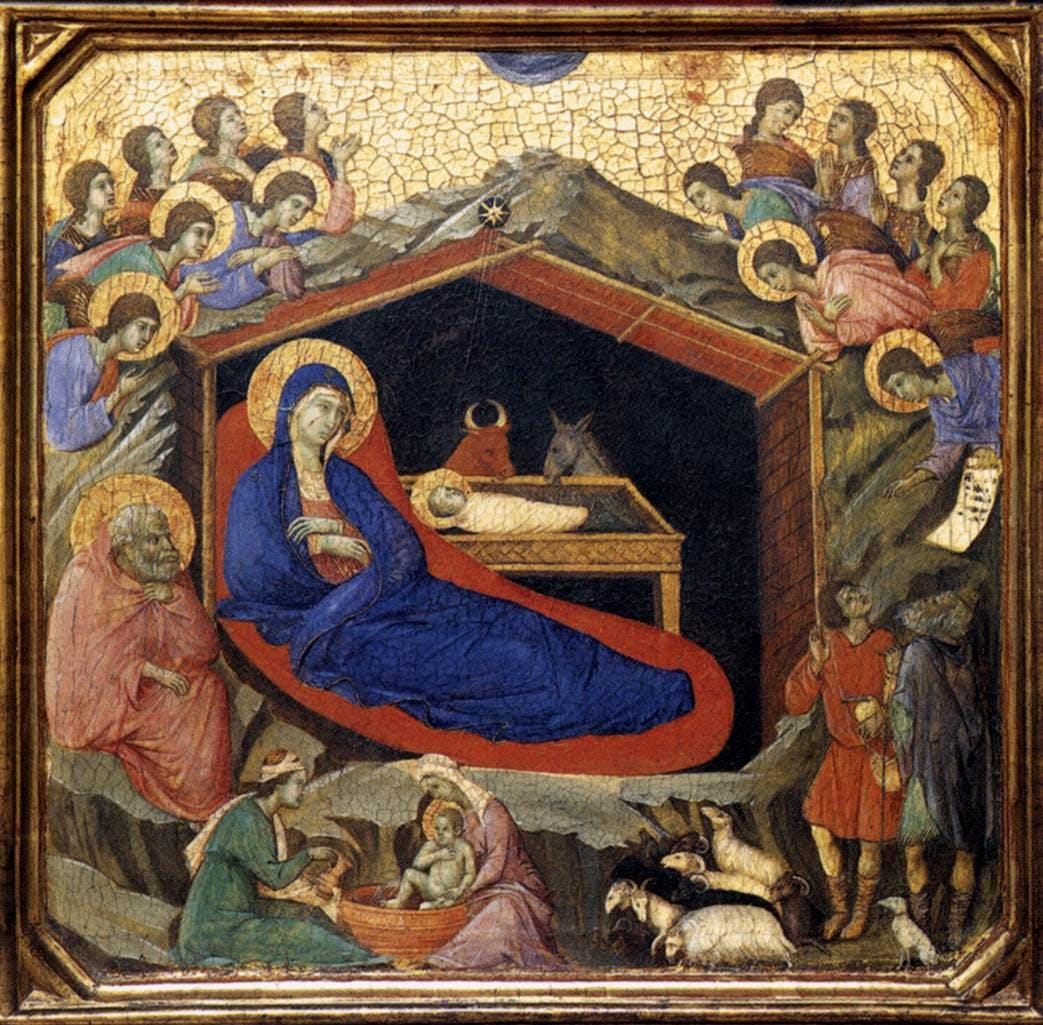Dear bookish friend,
I have gotten on a very seasonally-appropriate tangent lately. Where does the common iconography of our various nativities come from? Why does Mary always kneel, and Joseph either kneels or stands? Why is Mary so often blonde in traditional representations?
If you’ve been paying attention to such things, you may have noticed that in Eastern Orthodox portrayals of the Nativity, Mary usually lies down rather than kneels or stands. This seems very natural for a woman who has just given birth! This is true of earlier western scenes as well, like this one painted by Duccio, Mary reclines with her baby in the manger. Joseph rests to the side of her. Below, a nurse washes the baby, like a comic strip depicting another point in time, and shepherds marvel at the worshiping angels.

Sometimes, Mary is reading a book of hours in bed, praying in gratitude after the work of labor and new presence of the infant God. These versions are my favorite. I especially love this unusual fifteenth-century version from the Besancon Book of Hours, where Joseph has a special moment with his adopted son.
Keep reading with a 7-day free trial
Subscribe to Medievalish with Grace Hamman to keep reading this post and get 7 days of free access to the full post archives.



